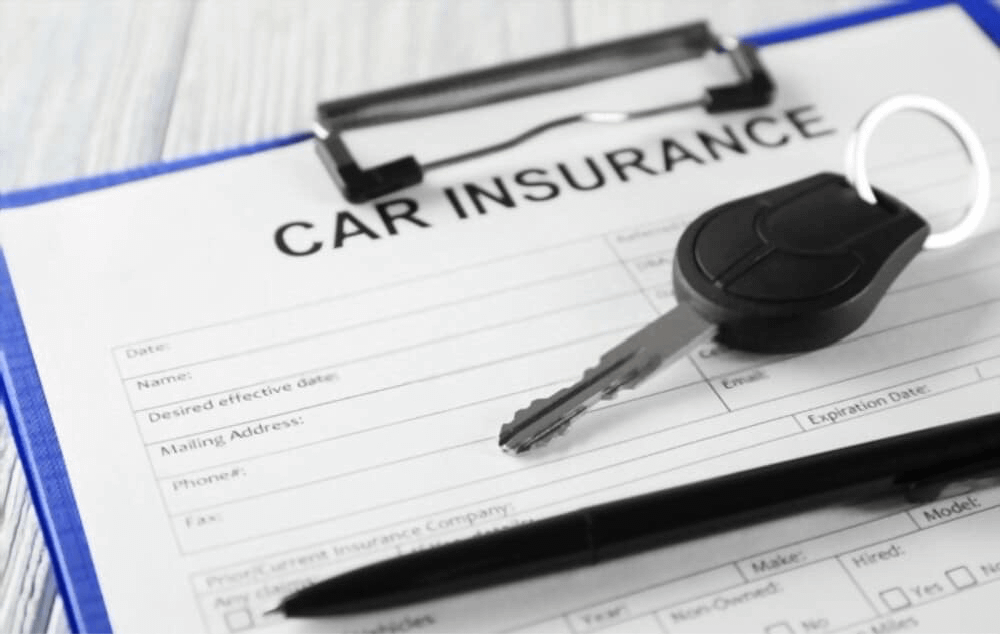Introduction
Auto insurance is an essential aspect of financial planning in every country. It provides financial protection against potential losses related to owning and operating a vehicle. Understanding the basics of auto insurance is crucial to making the right choices and ensuring you have adequate coverage in case of an accident or unforeseen events.

What is Auto Insurance?
Auto insurance is a contract between the vehicle owner and the insurance company, wherein the owner pays a premium, and the insurer agrees to bear the financial burden in case of accidents, theft, or damage to the insured vehicle. It provides coverage for property, liability, and medical expenses, depending on the chosen policy.
The Importance of Auto Insurance
Auto insurance is essential for several reasons. Firstly, it is a legal requirement in most countries to have at least basic liability coverage to protect others from potential damages caused by the insured vehicle. Secondly, auto insurance provides financial security to the vehicle owner, ensuring that they are not left with significant expenses in the event of an accident. Lastly, having auto insurance gives peace of mind, knowing that one is prepared for unexpected situations on the road.
Liability Coverage
Liability coverage is the most basic form of auto insurance and covers damages or injuries caused by the insured driver to others in an accident. It includes bodily injury liability, which pays for medical expenses, and property damage liability, which covers damages to other vehicles or property.
Collision Coverage
Collision coverage pays for repairs to the insured vehicle in case of a collision with another vehicle or object, regardless of who is at fault.
Comprehensive Coverage
Comprehensive coverage protects against damages to the insured vehicle caused by non-collision incidents such as theft, vandalism, natural disasters, or hitting an animal.
Underinsured Motorist Coverage
Uninsured/Underinsured Motorist Coverage provides protection if the insured is involved in an accident with a driver who doesn’t have insurance or has inadequate coverage.
Personal Injury Protection (PIP) Coverage
PIP coverage pays for medical expenses and lost wages for the insured and passengers injured in an accident, regardless of fault.
Driving Record
A clean driving record with no accidents or traffic violations typically results in lower premiums.
Vehicle Type
The make, model, and age of the vehicle can affect insurance rates. Sports cars and luxury vehicles often have higher premiums.
Age and Gender
Younger and inexperienced drivers, especially males, may have higher insurance costs due to higher risk factors.
Location
The location where the vehicle is primarily driven and parked also plays a role in determining insurance rates. Urban areas with higher traffic congestion may have higher premiums.
Credit Score
In some countries, credit scores are used to assess insurance risk. A higher credit score may result in lower premiums.
How to Choose the Right Auto Insurance Policy
When selecting an auto insurance policy, consider the following steps:
Assess Your Coverage Needs
Evaluate your requirements based on factors like vehicle type, driving habits, and budget.
Compare Quotes from Different Insurers
Get quotes from multiple insurance providers to find the best coverage at competitive rates.
Check for Discounts
Inquire about available discounts, such as multi-policy, safe driver, or good student discounts.
Read and Understand the Policy Terms
Thoroughly review the policy documents to know what is covered, excluded, and the claim process.
Tips for Lowering Auto Insurance Costs
Bundle Policies
Consider bundling auto insurance with other policies, such as home or renters insurance, to avail of discounts.
Increase Deductibles
Opting for higher deductibles can lower premium costs, but be prepared to pay more out-of-pocket in case of a claim.
Maintain a Good Credit Score
Improving your credit score can positively impact insurance rates.
Install Safety Features
Equipping your vehicle with safety features like anti-theft devices and airbags may result in lower premiums.
Minimum Coverage is Sufficient
While minimum coverage meets legal requirements, it may not offer adequate protection. Consider additional coverage options.
Auto Insurance Follows the Driver, Not the Vehicle
Auto insurance primarily follows the vehicle. If someone borrows your car with your permission and gets into an accident, your insurance typically covers it.
Filing a Claim
Contact your insurance provider immediately after an accident to start the claims process.
Claim Investigation
The insurance company will investigate the accident and determine coverage based on the policy.
Claim Settlement
If the claim is approved, the insurer will provide compensation as per the policy terms.
What to Do After an Accident
Ensure Safety First
Check for injuries and move to a safe location if possible.
Exchange Information
Exchange contact and insurance details with other parties involved.
Document the Accident Scene
Take photos and gather information about the accident scene and witnesses.
Advances in Technology
Technological advancements may lead to usage-based insurance, where premiums are based on driving behavior.
Self-Driving Cars and Insurance Implications
With the rise of self-driving cars, insurance models might undergo significant changes to adapt to new risks and liabilities.
Conclusion
Auto insurance is a critical aspect of financial planning that provides protection and peace of mind to vehicle owners. Understanding the different types of coverage, factors affecting premiums, and how to choose the right policy will empower individuals to make informed decisions about their auto insurance needs.
Recommendations
